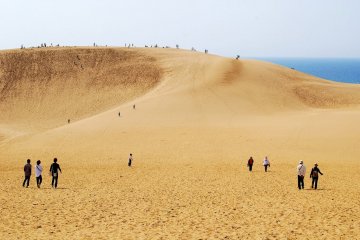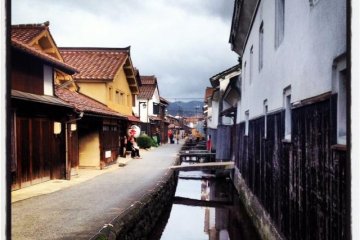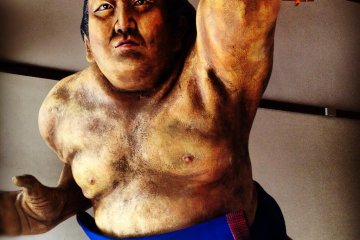This Saturday, I offered to drive a friend to Kurayoshi station, and whilst there, decided to take an impromptu visit around the town I’d heard so much, yet also knew so little, about. And how glad I am that I did. The kindly people at the Tourist Information office at the station gave me an extremely comprehensive, thankfully English-friendly, plan of the town and pointed me in the direction of its main attractions.
Although ‘Purple Town’ – affectionately called ‘P-Town’ by students and locals – boasted a shopping experience indistinguishable from other small malls I’ve visited around Japan, the true treasure of Kurayoshi lies in its beautiful Akagawara Shirakabe Dozougun. Here I happily spent two hours meandering within the rich history of its streets. In fact, I felt I had stepped back in time into a distinctly nostalgic vision of Japan’s Edo period. Gone were any visible signs of elsewhere’s omnipresent kitsch ‘kawaii culture’, and in its place, an abundance of vintage boutiques, antique stores, and local craftsmen selling a variety of traditional hand-made creations. These ranged from elegant hand-hand painted kites to intricate bamboo baskets. Each shop front retains its original warehouse style, boasting black paneled walls on white plaster and beautiful red-tiled roofs. Doors were flung wide open in order to welcome both native and foreigner to marvel at the crafts on display or, if booked in advance, have a try themselves. Also worth visiting are the Kuwata soy sauce and sake breweries found in this district – kindly offering samples in abundance!
Nestled between the shops and breweries are various other attractions; I particularly enjoyed the juxtaposition of modern and antiquated toys on display in the Hakota Doll Factory museum. Equally interesting, is the famous sumo-wrestler Kotozakura’s house, which faithfully celebrates the heroes career and offers a comprehensible insight into the life of a sumo wrestler – something to which I was previously ignorant. There are also multiple temples dotted around, such as the Daigakuin Temple, tucked away from the main street, providing a peaceful retreat from the busier areas. Cafes and restaurants are also easy to come by, and I spent a quiet hour reading up on Kurayoshi’s history whilst sipping coffee from chintz china in Café ‘Tennyo no Izumi’ which is conveniently attached to the Kurayoshi Tourist Information office.
If you have the time, then spending the afternoon here is well worth travelling for. Kurayoshi provides a rich and authentic insight into Japanese history, and I was incredibly well-treated by the local people.









